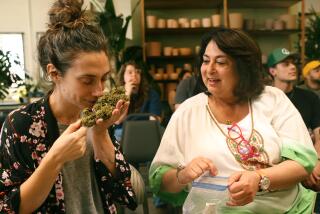If You Can’t Beat Them, Cultivate ‘Em
Rather than eradicating weeds from the landscape, some people give in and let them grow--especially the more attractive types.
“Some weeds are as pretty as (anything) you find in the nursery,” said Charlotte Clarke, an instructor of biology and economic botany at Fullerton College and author of the book “Edible and Useful Plants of California” (University of California Press, $12.95), which discusses a variety of what Clarke considers “useful” weeds.
“The scarlet pimpernel, for example, is a very pretty plant with a salmon-colored flower that makes an attractive annual ground cover in the late winter and early spring,” she said.
What is a weed to one person can be an attractive landscape addition to another.
“A weed is a plant that springs up on its own,” Clarke said. “What we would recognize as ornamental could be considered a weed if it begins growing where it’s not supposed to.”
In addition to adding ornamental variety to a landscape, weeds have a variety of uses.
“You can make natural dyes with them, and they have been historically used for medical purposes,” she said.
Many weeds also produce edible fruits and vegetables that are highly nutritious.
Because they have been trained to grow in uncultivated soils, weeds have learned to pull nutrients out of the soil and store them in vast quantities. For that reason, a weed could be much more nutritious than a bowl of broccoli that has been raised on fertilizer.
In Europe, the large stinging nettle is made into a soup. “At one point, Euell Gibbons had the plant analyzed and found it to be the highest source of plant protein and extremely high in Vitamin A,” Clarke said.
Some edible weeds commonly found growing in Orange County soils include a wild radish that has pods that look like green beans. These are best eaten raw in salads, Clarke says. Cheese weed is another plant whose young fruit can be eaten raw.
And fennel is also tasty.
“Fennel is wonderful in tea and fruit salads and can be used in pizza seasoning,” Clarke said.






